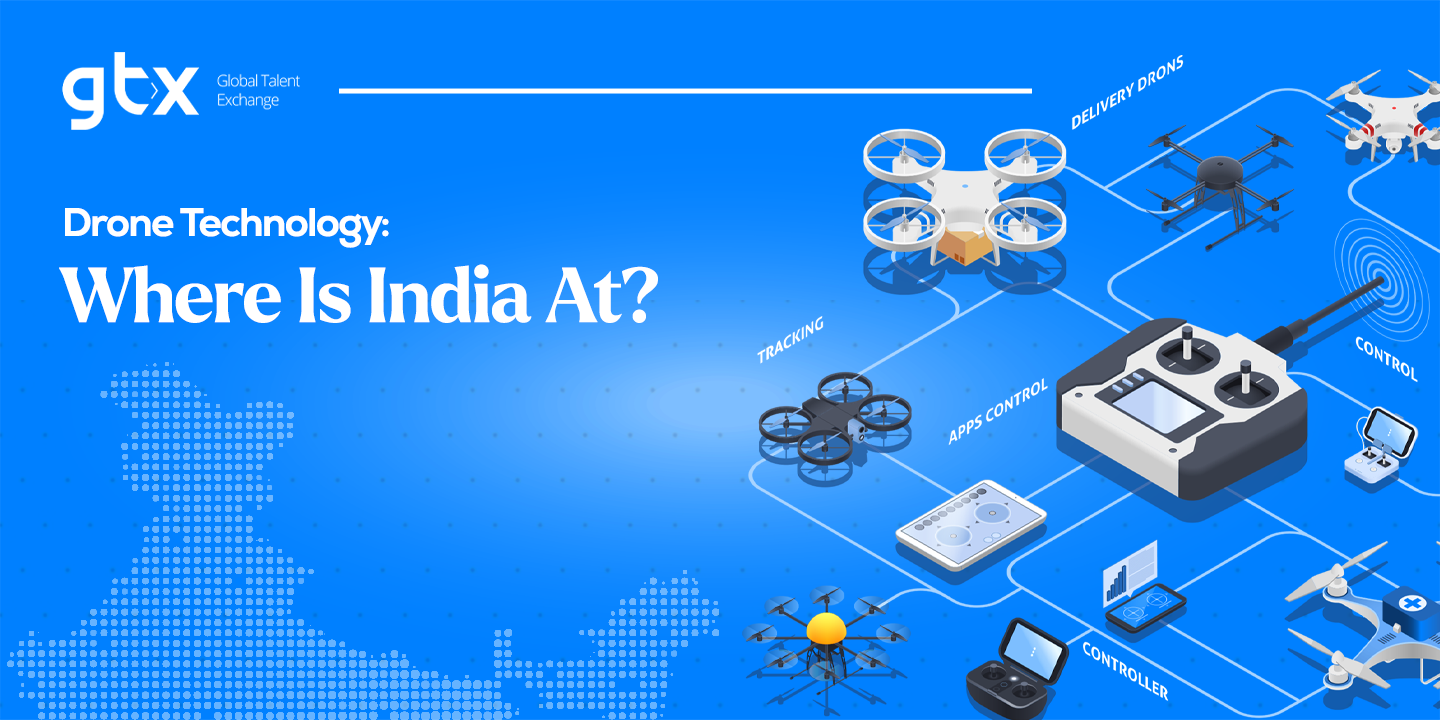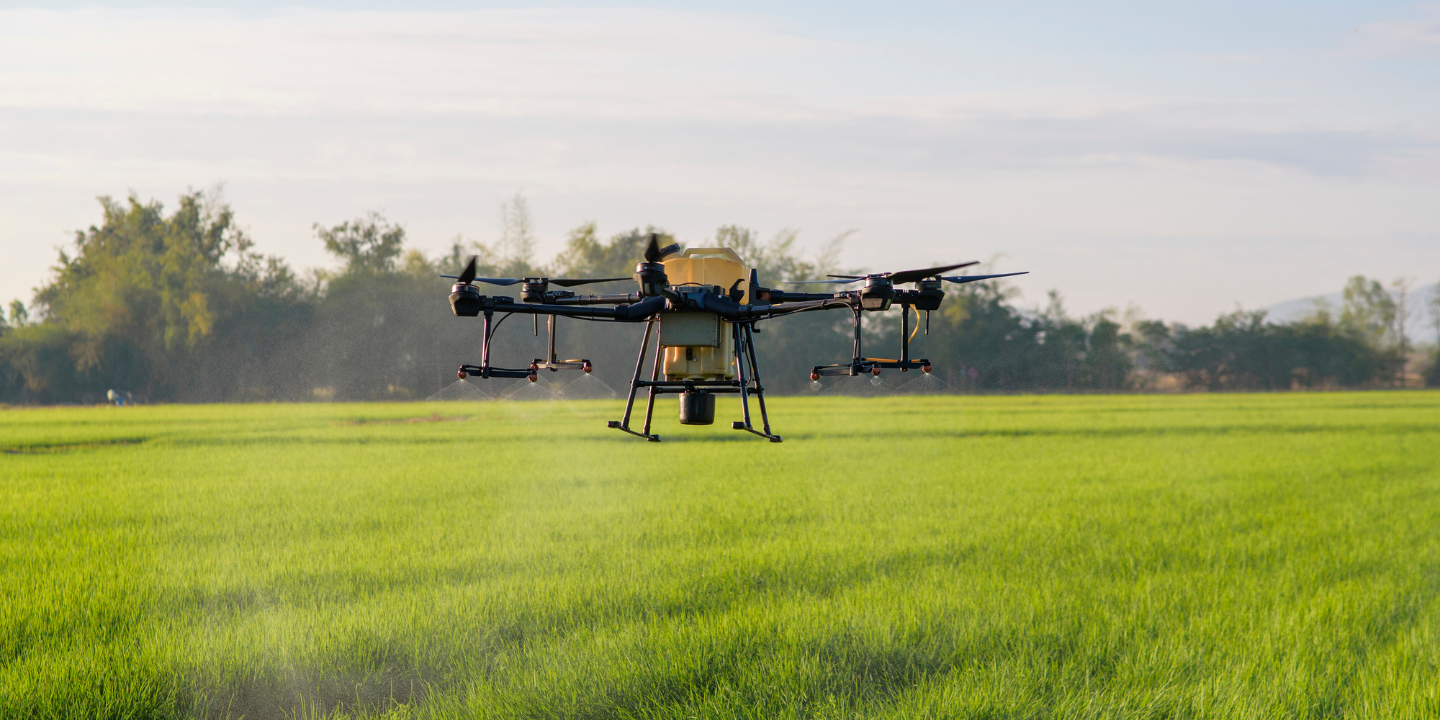India is ‘soaring high’ with Drone technology!
Drones or UAVs (unmanned Aerial Vehicles) can be ‘piloted’ remotely or even be fully automated with the help of a system of sensors and Light Detection and Ranging (LIDAR) detectors that calculate movement.
With the massive growth of technology that we’re witnessing today, drones have evolved and are now being used for several purposes, ranging from being decoys in combat and launching missiles, to monitoring climate change and disaster management, enhancing agricultural efforts, and contributing to law enforcement. Drones were even used during the Covid-19 crisis in order to deliver vaccines to remote locations.
Read on for a better understanding of their ‘regime’ in India.
Government Initiatives
The government continues to promote drone technology with several initiatives that actively use this technology:
- SVAMITVA (Scheme or the Survey of Villages and Mapping with Improvised Technology in Village Areas): An initiative of the Ministry of Panchayati Raj, it is aimed at making sure that rural people have the right to document their properties. Land mapping is undertaken via drones, with the vision that latest by March 2025 every Indian village will be covered by SVAMITVA. Drone technology mapping also creates a database of rural lands, which could be used in the future for projects of development.
- Relaxation in Drone Regulations has been one of the highlights for this realm. 2021 brought about liberalized rules that helped entrepreneurs and new business owners efficiently use drone technology and compete at a global business level. With the ease of use and lowered restrictions, India is poised to grow exponentially in this technology and could become a global drone hub as early as 2030!
- PLI (Production Linked Incentive) Scheme for Drones and their Components complements the liberalization of drone regulations. The incentives being provided to manufacturers and companies are to ensure that an increasing number of them invest in drone technology and the benefits reach a larger number of industry sectors, including, but not limited to healthcare, surveillance, geo-spatial mapping, real estate, and others.
- The Hara Bhara Campaign promotes reforestation with the help of drone technology – an initiative by the Telangana Government and a private company. Drones with the capability to disperse seeds over farmlands in a bid to maintain and sustain ecological balance.
- The Drone Mela at Gwalior organized in December 2021, was a joint effort by the Ministry of Civil Aviation, Government of Madhya Pradesh, Federation of Indian Chambers of Commerce and Industry (FICCI) at Madhav Institute of Technology and Science (MITS). The event was for investors, manufacturers, farmers, and even students – interested in the many uses of drones for various sectors. The announcement of the setting up of 5 drone schools in Madhya Pradesh was also a major highlight for the country.
- Kisan Drone Yatra held in February 2022 witnessed the launch of 100 Kisan Drones from 100 different locations across the country, to be used for addressing agricultural issues in the villages and also for spraying pesticides. A company – Garuda Aerospace – has been assigned the responsibility of making 1 lakh drones over the next two years.
The New Drone Rules
August brought an easing of the restrictions on ‘unmanned aircrafts’, enabling increased ownership and operation of drones in the country. One of the most notable changes in the rule is that in the micro and nano drone category, owners would not require a remote pilot’s license. The coverage has been ramped up too – from 300kg to 500kg and will include drone taxis.
‘Droning’ in New Job Opportunities
With the emergence of drone usage and technologies, the job market has evolved and opened up with a range of opportunities, across industries. Drone technology has suddenly spiralled from being a niche segment to being a critical and mainstream one. The new and liberalized drone rules have augmented this segment and the industry is expected to grow exponentially in the next decade, with several new career possibilities. Here are just a few.
1. Assemblers and Design Engineers
Expertise in several engineering realms is urgently needed within this realm. Hence, those who have engineering expertise in Mechanical and Robotics Electrical and Electronics, and Aeronautical, are in demand for building drones, while assemblers are in demand to put it all together.
2. Drone Pilots
2. Drone Pilots
With the increase in demand for drone operations, ‘pilots’ with proficiency in remotely managing the flight of drones is a highly valued skill. Given their critical role, training and certifications with industry-specific specialization are extremely important. Hence, trainers and institutes that impart such training are also in demand, creating more jobs for people who can impart such knowledge and manage the institutes/training centers.
3. UAV Flight Organizers
This is also a highly specialized job requiring skill in flight scheduling, knowledge of altitude and weather, and specifications with regard to the kind and method of image and video capturing. Such flight planners would also have expertise in specific use cases, exact flight locations, and knowledge of zones (red, yellow, and green) to keep drones away from restricted zones.
4. Software Engineers for Drones
4. Software Engineers for Drones
Accurate and secure software for drone operation is crucial to the success of these devices. The software must not only suit the use cases but must also be extremely secure to ensure safety from cyberattacks. Hence, this new realm gives rise to a new breed of software developers, who need to be constantly upskilled to keep pace with the dynamic technology.
5. Data Specialists for Drones
Drones are being used to capture data, and hence, drone data specialists and analysts are in demand to process and analyze the vast amounts of datasets that would be available via drones. Additionally, another set of employees – GIS (Geographic Information Systems) Engineers – are also in demand. Their job is to create and test GIS platforms to match specific user needs, and each industry would need experts as per their realm to convert drone data into usable information.
The good news for emerging drone aspirants is that there are formal training institutes and relevant courses in India to help them start their drone journey. Several universities are tying up with associations and companies to facilitate courses that will enable one to land good jobs within the drone industry.
The Flight Ahead
While still in the nascent stage, the drone manufacturing industry is growing wings (literally so!) The government is essaying a critical role in accelerating the country’s drone industry – and experts agree that the pace is faster than other global players.
The adoption of drones and their technology has already picked up the pace, but there is still a lot to be done from the perspective of making them indigenously. As we move forward, further policy changes and reforms and ease of financial assistance would be required to grow this sector exponentially. The sector has the potential to create a substantial number of jobs, which in turn would drive economic growth and stability, and bring about all-inclusive development.
Here’s wishing India a great ‘flight’!






